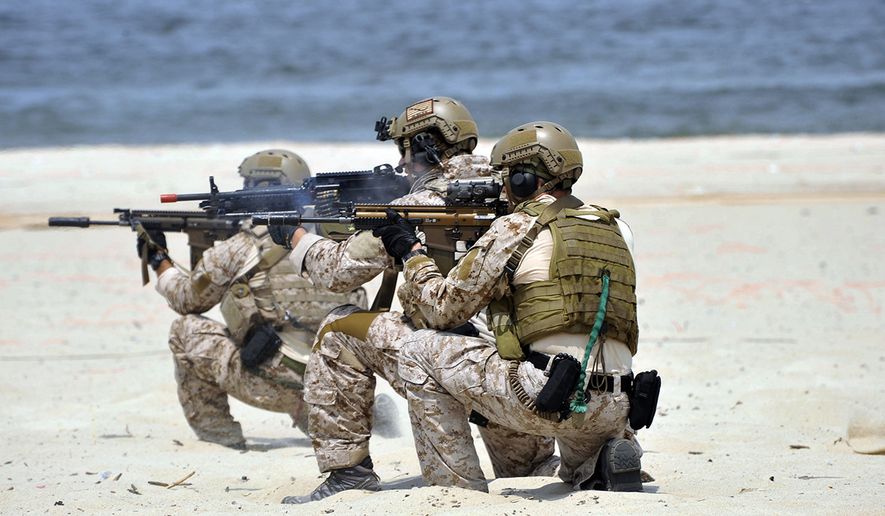The Pentagon on Tuesday identified the Navy SEAL killed during a daring predawn raid on an al Qaeda redoubt in southeast Yemen, even as U.S. officials were pushing back against critical media reports that parts of the mission had gone badly awry.
Chief Petty Officer William “Ryan” Owens, a 36-year-old Illinois native and member of the Navy’s vaunted SEAL Team Six, was killed and six other U.S. special operations members were injured during the mission executed early Sunday morning reportedly seeking to capture computers and other intelligence at the compound. CPO Owens is believed to be the first U.S. military fatality since President Trump took office Jan. 20.
Three U.S. commandos were shot in an unexpected firefight at the site, and three more were wounded in the “hard landing” of a Marine Corps MV-22 helicopter that had to be destroyed at the site.
CPO Ryan “gave his full measure for our nation, and in performing his duty, he upheld the noblest standard of military service,” Defense Secretary James N. Mattis said in a statement Monday.
The Yemeni mission was the first known counterterrorism operation carried out under the Trump administration, although planning for the mission was begun under President Obama. Mr. Mattis reportedly left midway through the traditional Alfalfa Dinner in downtown Washington Saturday evening to monitor the unfolding attack.
“It is something that had been in the works for awhile,” Pentagon spokesman Capt. Jeff Davis said. “But there were operational reasons it happened when it did.”
Pentagon officials insist the mission was a success overall, resulting in the death of 14 members of al Qaeda’s potent Yemeni cell, known as al Qaeda in the Arabian Peninsula or AQAP, while gaining “deeper insight into the group’s planning” for potential attacks against targets inside the United States, Capt. Davis told reporters.
But other reports claim the mission was troubled from the beginning, resulting in a large number of civilians killed, mostly women and children. “Almost everything went wrong,” a senior U.S. military official told NBC News regarding the operation.
Reportedly among the dead was the 8-year-old daughter of Anwar al-Awlaki, the radical Yemeni-American cleric and spiritual leader of the Yemeni cell who was killed in 2011 in a U.S. drone strike. President Trump on the 2016 campaign trail floated the idea that the U.S. should go after the families of known terrorists as part of a more aggressive strategy to defeat radical Islamic terror movements.
White House Press Secretary Sean Spicer declined to comment Tuesday on whether al-Awlaki’s daughter or other children were among the dead as a result of the operation.
“I’m not going to go any farther than what the Department of Defense has [said]. Obviously, we recovered a tremendous amount of information and we killed an estimated 14 members of AQAP,” he told reporters at the White House.
At the Pentagon, Capt. Davis said reports on casualties, particularly those of females, should be “taken with a grain of salt.”
While Pentagon officials are still reviewing civilian casualty reports, Capt. Davis noted a number of female fighters were part of the al Qaeda force battling the SEAL team as it advanced on the group’s al-Baydah compound.
“There were a lot of female combatants as part of this” operation, he said. American forces on the ground observed female combatants moving toward fighting positions and firing on American troops as the raid progressed “as though they had been trained to be ready for something like this,” Capt. Davis added.
From September through mid-January, U.S. forces launched 14 strikes against AQAP, killing 36 of the group’s members, according to U.S. Central Command. Half of all those airstrikes, carried out by a mix of American warplanes and armed drones, focused on al-Baydah.
• Carlo Muñoz can be reached at cmunoz@washingtontimes.com.




Please read our comment policy before commenting.